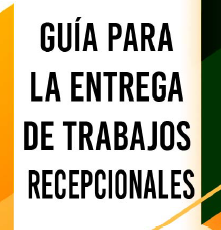Mostrar el registro sencillo del ítem
Love and knowledge: recovering the heart through contemplation by Arthur Zajonc and an analysis of the tecniques used by the translator.
| dc.contributor.author | Crespo Alvarado, Karla Gabriela | |
| dc.date.accessioned | 2022-11-18T21:20:25Z | |
| dc.date.available | 2022-11-18T21:20:25Z | |
| dc.date.issued | 2018 | |
| dc.identifier.uri | http://hdl.handle.net/20.500.12249/3009 | |
| dc.description.abstract | Thanks to translation, cultures can be expressed properly in the world. Translation is a very important tool of communication, given that people from different parts of earth can be communicated. Furthermore, nations keep in touch and informed among them about their most recent news. Translating a text is not only to change a series of words into another language, to translate means to inform human beings, despite linguistic barriers. There are two relevant aspects that are part of every translation task: the source language (original text) and the target language (the language it is to be translated into). These terms are very recurrent in the monograph study. As the whole world is coming together based on information sharing and communicative advances, it is natural that there has been a constant demand and an unprecedented need for translation of ideas from one language to another. Translation is one of the most significant Jobs in modern society. It plays a vital role in the performance of international companies, governments alike, human rights issues, technology, medicine, and of course, in education. Most of translations are carried out in English due to it is now the most widely used language in the world. It has been well propagated around the planet, becoming the leading language of international events. Books, magazines, articles and newspapers written in English are available in many countries around the world. So that, most of information is given in English and people who do not master that language need to be informed too, English writings are translated in different languages every day. | |
| dc.description.provenance | Submitted by Yeni Martin Cahum (yenimartin@uqroo.edu.mx) on 2022-11-18T21:20:24Z No. of bitstreams: 1 P306.2018-3009.pdf: 3703352 bytes, checksum: bb32d9a99d7f6a5c77a0de7fcdf16b1f (MD5) | |
| dc.description.provenance | Made available in DSpace on 2022-11-18T21:20:25Z (GMT). No. of bitstreams: 1 P306.2018-3009.pdf: 3703352 bytes, checksum: bb32d9a99d7f6a5c77a0de7fcdf16b1f (MD5) Previous issue date: 2018 | |
| dc.format | ||
| dc.language.iso | eng | |
| dc.publisher | Universidad Autónoma del Estado de Quintana Roo | |
| dc.rights.uri | http://creativecommons.org/licenses/by-nc-nd/4.0 | |
| dc.subject | Traducción e interpretación | |
| dc.subject | Inglés -- Traducción | |
| dc.subject | Español-- Traducción | |
| dc.subject.classification | HUMANIDADES Y CIENCIAS DE LA CONDUCTA::LINGÜÍSTICA::LINGÜÍSTICA APLICADA::TRADUCCIÓN | |
| dc.subject.lcc | P306 | |
| dc.title | Love and knowledge: recovering the heart through contemplation by Arthur Zajonc and an analysis of the tecniques used by the translator. | |
| dc.type | Trabajo de grado, licenciatura | |
| dc.type.conacyt | bachelorDegreeWork | |
| dc.rights.acces | openAccess | |
| dc.identificator | 4||57||5701||570112 | |
| dc.audience | generalPublic | |
| dc.division | Biblioteca Unidad Académica Chetumal, Santiago Pacheco Cruz |
Ficheros en el ítem
Este ítem aparece en la(s) siguiente(s) colección(ones)
-
Licenciatura [2489]






